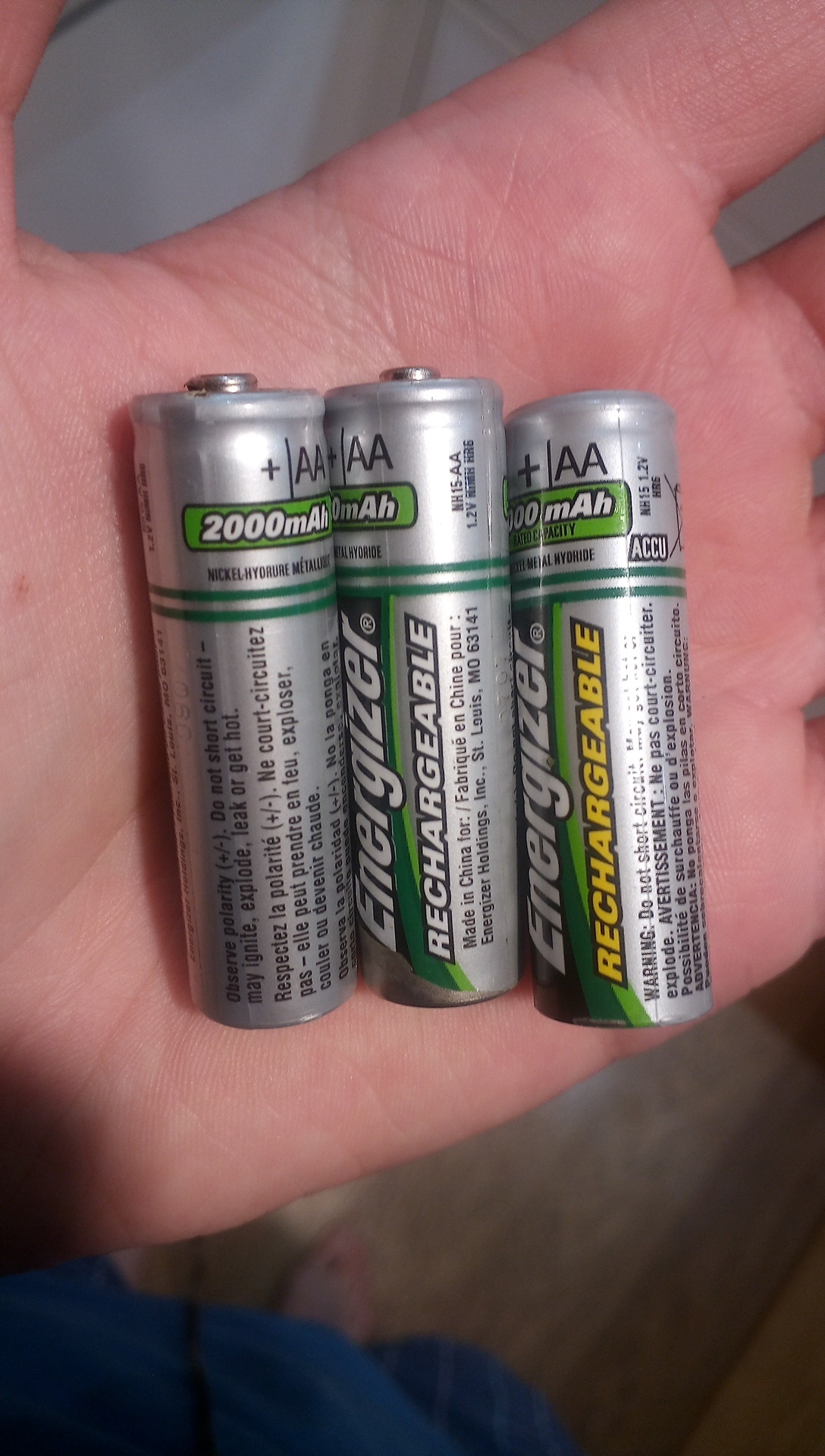this post was submitted on 07 Aug 2023
497 points (100.0% liked)
Technology
37739 readers
599 users here now
A nice place to discuss rumors, happenings, innovations, and challenges in the technology sphere. We also welcome discussions on the intersections of technology and society. If it’s technological news or discussion of technology, it probably belongs here.
Remember the overriding ethos on Beehaw: Be(e) Nice. Each user you encounter here is a person, and should be treated with kindness (even if they’re wrong, or use a Linux distro you don’t like). Personal attacks will not be tolerated.
Subcommunities on Beehaw:
This community's icon was made by Aaron Schneider, under the CC-BY-NC-SA 4.0 license.
founded 2 years ago
MODERATORS
you are viewing a single comment's thread
view the rest of the comments
view the rest of the comments

Besides being the wrong size by definition, AA batteries are expected to have 0.8V to 1.5V, while Lithium Ion cells (such as 18650) have a voltage range of 2V to 4.2V. That’s completely incompatible, you couldn’t even replace two AA batteries with a single Li-Ion cell.
That can actually work. A single 14500 Li-Ion along with a dummy battery can work in many devices, as they have regulators for the voltage in the device (it might blow up other devices and won't give any energy advantages). That said, there is very rarely any use for this these days, as you can buy 1.5V AA Li-Ion batteries with the voltage regulator build in, that will work in all devices. More expensive than NiMH however, so only really good when the device absolutely needs the 1.5V and isn't happy with the 1.2V of NiMH.
Most 18650's don't go down to 2 volts. They should be considered "flat" at 3.4 volts - going any lower risks damaging the battery (unless you know what chemistry it uses, some can go lower safely).
Allowing a rechargeable AA to get down to 0.8V is also risky, if you go much lower than that you will damage the battery.
An 18650 is essentially the same voltage as three AA's. And the amount of charge level they store is closer to five or six. The size and weight, on the other hand, is a bit more than one AA.
But the biggest advantage, by far, is a lot of devices can be powered by a single 18650 but would require multiple AA's to have acceptable battery life (or a high enough voltage). As soon as you have multiple batteries thing start to get really complex. Your batteries will never be at exactly the same charge state and that can potentially damage the battery and the device.
Couldn't it theoretically be fixed with a voltage regulator?
Don't they need a circuit protection to not over-discharge lithium batteries? Most AA devices would suck all the juice from the battery until it stops working.
The problem with those is that the device loses the ability to sense the charge status of the battery, since the voltage remains the same until it’s empty.
NiMH AA's have the same problem.
Yes.
The other problem with lithium batteries like 18650s is that they need to be handled with care so manufacturers don't want users swapping them in and out like AA/AAA. This is why they build them into devices and have you charge them through a regulated port.
Also there are numerous different versions and sizes of 18650, some come with protection circuit, some don't, some have flat top, some have button top, and whatever type you end up with might or might not fit your device. Makes the whole situation quite confusing for the average user.
Well there aren't really different sizes of 18650s, if you chance the size it's no longer an 18650.
The flat vs button top issue can be annoying though
18650 with protection circuit are around 69mm in length instead of 65mm.